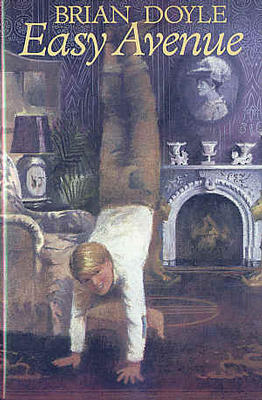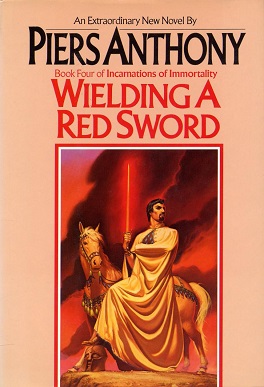
There was a student in my Children's Literature class a couple of years ago who would raise her hand every time I asked if anyone had read a particular book. All of my students are amazing, but this student, Nicole, seemed to have read everything. When she told me, at the end of the year, that I had to read Andrew Clement's Keepers of the School series, I ordered it immediately. And it came as no shock to me to learn that she was right. It is an excellent book -- particularly for upper elementary and middle school.
Benjamin Pratt' attends a strange school. It was built over two centuries ago by a sea captain who wanted to give the kids of the town an educational institution that would last. The school almost seems to be as much of a boat as it is a school. with decks instead of floors and a ship's bell to signal the end of class. When Ben starts school for the year, still reeling from his parents' separation, he finds out the school is scheduled to be torn down to make way for a huge amusement park that could revitalize the area's economy. He also has an odd encounter with the school's head janitor, a man who has served at the school for as long as anyone can remember. He presses into Ben's hand a golden coin, which sets in motion the story that follows (including intrigue, mischief, new friends, sailboat races, rescue, secret compartments, hidden messages, and the chance to save the school). Almost from the star, Ben's friend Jill is a part of the story as well, but as the series develops, Jill's role expands.
Fair warning, though, the story is not complete in this book, it leads right into the next book in this series.
The book is well-written, exciting, requires student-readers to do some thinking as they go, and connects with both male and female readers. There is nothing in the books that would cause them to be challenged, though the kids do sometimes go against school rules. This is not a book to choose if you want to engage students in discovering new cultures -- it is very much about white, middle class people -- but it is a good story and I can think of no reason for you not to get ahold of it for your classroom library.
Acampora, Paul (2014) I Kill the Mockingbird. New York: Roaring Brook.

Opening lines: "My mother's wheelchair does not fit through the bathroom door and
I don't know what to do about it."
Lucy, Elena, and Michael had this amazing teacher who they called Fat Bob. Fat Bob died at the end of the previous school year and they have been trying to figure out how to do right by him. When they read Harper Lee's To Kill a Mockingbird they decide that everybody should read it. Further, they believe the best way to make people want to read it is to make it scarce and hard to find. So they visit bookstores throughout their area and take all the copies of To Kill and Mockingbird and hide them elsewhere in the store. Their scheme starts to pick up momentum and soon grows out of control. But how they solve that problem is only a part of the book. Lucy, the narrator also has to figure out how to convince her mother to eat better so she will recover from her chemotherapy, and she has to figure out what to do about her friend Elena who think is that Lucy likes their other friend Michael as more than a friend. Especially because what Elena says might be true. Along the way the story includes a horror Santa with an axe, major home runs, Uncle Mort's bookstore, graveyard talks, and a movement that sweeps the country. Fat Bob would be proud.
It is a fine book.
There is some mischief in the book, but nothing that would get it challenged. This one would be best for fifth graders and up -- but would work really well for middle school. I can't be sure, but I think it might make a good read aloud too. And chapter 17 might make a nice little dramatic reading for somebody.
Get it.
Terrell, Heather (2013) The Relic. New York: Soho Teen.
Opening lines: "Eamon throws his axe into the ice above his head. He hits a perfect depression in the wall. Pulling up hard, he kicks the bear claw toes of his climbing boots into the wall. He repeats this practiced motion over and over. Like some kind of arctic cat, he scales the frozen Ring."
I was really excited about this book. It is such a cool idea for a dystopian novel. In the near future, after an ice age, a medieval style community sends its adolescents on a rite of passage to plumb the crevasses of a frozen sea and bring back artifacts of the previous civilization. Especially valuable artifacts (e.g. the ones that make refrence to the false god Apple) mean that the finder will win a seat on the ruling council. So it is both a trial and a contest. Eva, the daughter of the chief, decides after the apparently accidental death of her brother Eamon that she is going to compete in the Testing. Maidens are allowed to do so, but it is very rare. The book also features an interesting love triangle, and Eva proves to be a remarkably capable competitor and anyway, as I say, when I first heard about it, I as pretty excited.
But I ended up being disappointed in the book iself, mostly because the actual writing is pretty bad in places. Eva, whose voice the book is written in, tends to spend most of her time thinking about her motivation to do something and asking questions about why she should or shouldn't do it. I can imagine books in which such an approach would lead me to be very interested in the main character and share in that character's difficulty in making certain decisions -- but this book is supposed to be, to some extent, an action book. In the moments when things get really exciting -- when Eva is scaling an ice wall or dogsled racing against the other competitors or helping a competitor in clear violation of the rules -- she begins this lengthy and tiresome internal monologue. It made me want to scream at the book sometimes.
Maybe you like that sort of thing -- maybe it just isn't my kind of book. If so, you might want to pick it up and read a chapter or two and see what you think. There is nothing particularly offensive here -- though I suspect some readers could see parts of the book as an indictment against religion -- and I doubt it would be challenged. I'll leave the choice to read it up to you, though.









